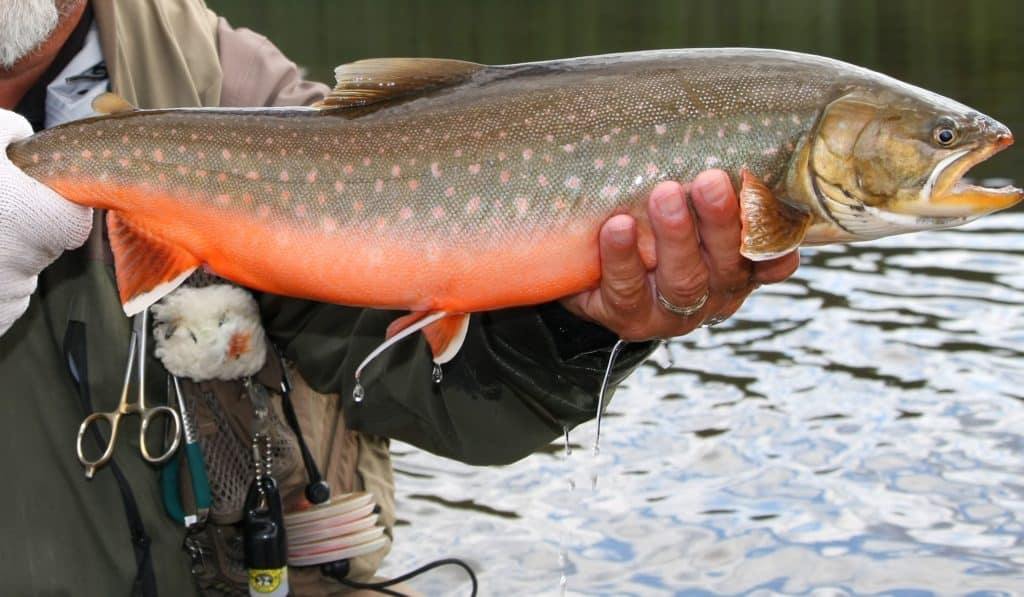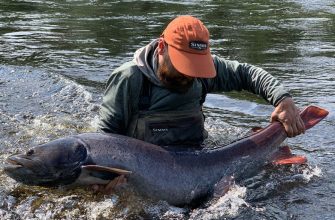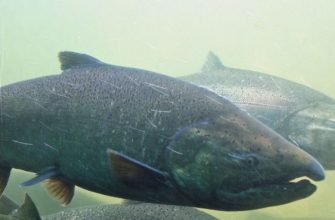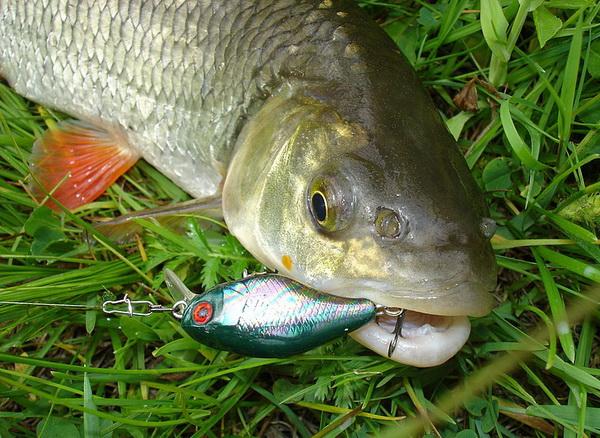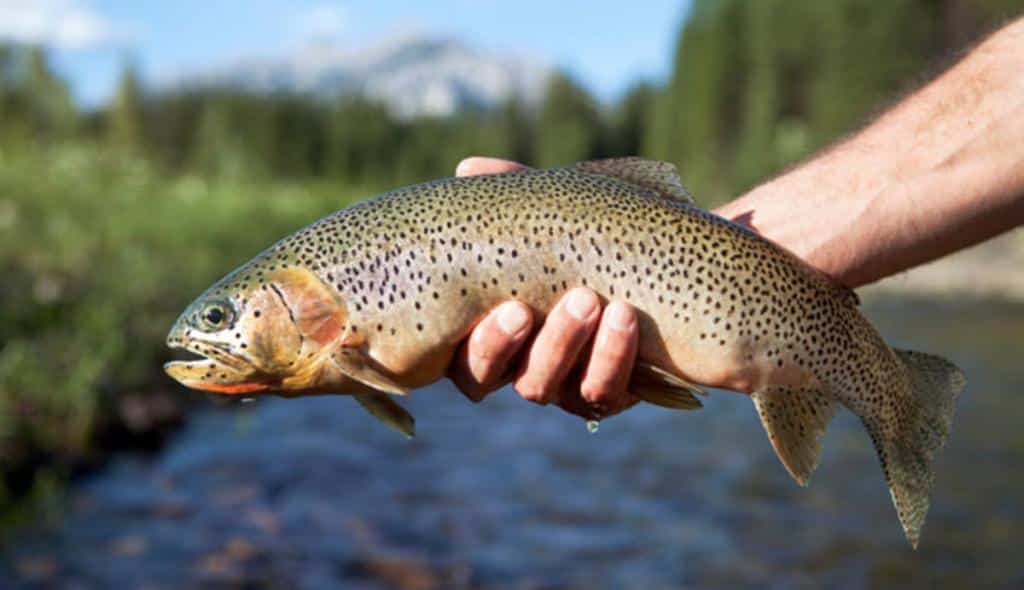On the territory of our vast country, there is a huge number of valuable species of fish, which we are used to hearing only from others, or having no idea what it is like to catch a valuable fish, observing only its high price tag in the store. One of these valuable fish is undoubtedly the char. One cannot but agree that most of the inhabitants of the European part of the country and the southern Urals have never caught this fish. This article will tell you in detail about what exactly char is, what types of this fish are, and also reveal some secrets in terms of its fishing and gastronomic value.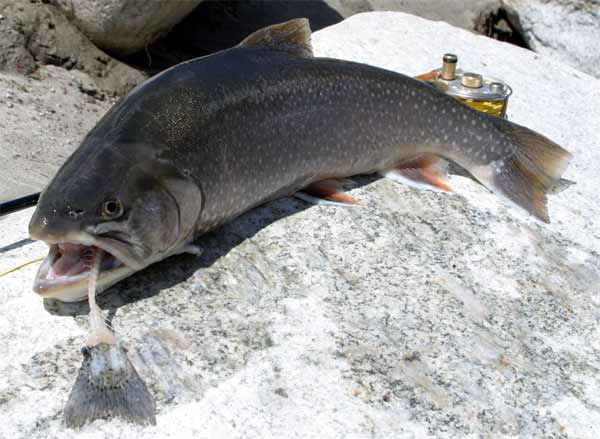
- What is this char fish and what does the fish look like – species with photos and descriptions
- Types of charr, their description, habitat, habits and preferences in habitat
- Arctic char (checkpoint) – what it looks like with a photo and description
- Lake char – features of the species
- River char
- Kamchatka char
- What does char eat?
- How to fish char – selection and collection of tackle, fishing tactics
- Spinning tackle
- Float tackle
- Taste qualities of char, how is it useful and what commercial value does it have?
- The price of char in the Russian Federation per 1 kg as of 2021
- How to cook char – some simple and delicious recipes
- Loach baked in foil
- Char ear
- Поделиться ссылкой:
What is this char fish and what does the fish look like – species with photos and descriptions
The name of this fish is in some sense collective. The word “char” means several salmon species at once that live in the northern part of our country, Canada, the USA (Alaska), Norway, Sweden, Denmark and some other European states located in the center of Europe, but the population of char and its species diversity there extremely few and often in ordinary public water bodies you can find only lake char, and other species can be caught only in paid water bodies.
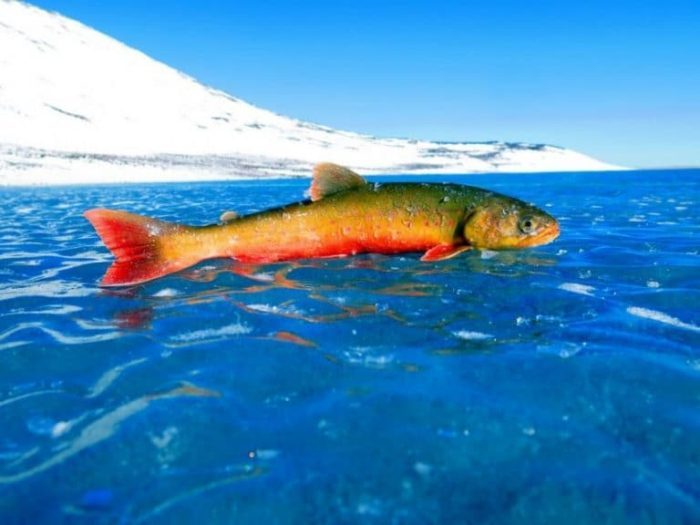

Types of charr, their description, habitat, habits and preferences in habitat
So, let’s consider the main types of char, allocated at the moment. Each of the species lives in our country, therefore, with the proper desire, there is a great chance to go to its habitat or to private reservoirs and catch this beautiful and lively fish with your own hands.
Arctic char (checkpoint) – what it looks like with a photo and description
Arctic char is the largest representative of char. Its weight can reach, subject to the presence of all factors contributing to the favorable growth of fish, 15-20 kilograms with a length of 1 to 1.5 meters. It lives in the northern part of our country, as well as in the north of the Far East. Comes from the basin of the Arctic Ocean and the Pacific Ocean. Juveniles grows for some time in fresh rivers, where they are born during spawning, and then, growing up a little, they go to sea after a year or two, in order to return later, but already in a sexually mature status to continue offspring and take care of them. The color of fish is extremely unstable and can change due to any changes in its environment or the period of life of the fish. Thus, during spawning, the fish acquires a brighter color, turning red, orange or yellowish,and in normal times it has paler scales and slight darkening in the form of spots or reflections of brown.
It is noteworthy that during spawning, males are painted in more aggressive tones in order to seem more attractive to females and more terrible to natural competitors and enemies when protecting offspring in the form of clutches and juveniles.

Lake char – features of the species
Unlike the previous variety, this one is just tiny. In general and among all charrs, lake char is considered the smallest. Its body length is only 20-35 cm and weighs from 400 grams to 1.5-2 kilograms. It is important to know the conditions in which the char and the reservoir as a whole are located, because its further growth depends on this. This type of char, although not similar in size to the others, is at the same time their reduced prototype, repeating the torpedo-like structure of its counterparts, the presence of small and bright scales, some taste preferences and habits and, of course, a bright color. This species is of less commercial value, being caught in most cases only for sporting interests or in the interests of amateur fishermen.
River char

Kamchatka char
Despite many controversies, Kamchatka char still stands out as an independent species of this fish. It must be said that its size is very impressive, although it is inferior in this to the Arctic char. Their external similarity is also extremely high. Kamchatka char also most often has a pale silver color with small bright reflections or spots, and as spawning approaches, it can change its appearance. Its size is comparable to the size of river char, and its habits are surprisingly similar as well as size. Judging by the name, we can conclude that this type of char lives in Kamchatka and is, in some sense, unique. The largest concentration of this species is observed in lakes Kronotskoye and Azhabachye.
What does char eat?
The char nutrition is very varied. We can say that the fish in this regard is a gourmet. Although it should be borne in mind that the fish is a predator and that its diet in artificial cultivation, the diet must include animal components containing protein. In general, it can be noted that the larger species of char, Arctic and Kamchatka, as well as a little less often and with the proper size of the river, necessarily feed on small fish. Smaller char species also require the required amount of protein in the diet. They replace it with various insects, amphipods, eggs of other fish, including salmonids, zooplankton, mollusks and larvae that they find at the bottom. 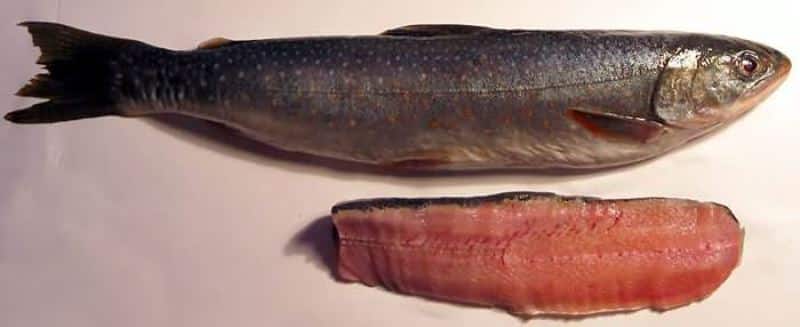
fish seen in the photo [/ caption]
How to fish char – selection and collection of tackle, fishing tactics
When it comes to catching such a rare and beautiful fish, you need to understand that preparation before fishing in this case is more important than ever. When fishing for salmonids, due to the fact that they are predators, they most often use spinning tackle. But do not forget that among the char there are also smaller ones of the lake or small river type, which show much less interest in fry and, due to their size, are forced to eat smaller food like insects. That is why, for catching many salmon and char, among other things, two main tackles are used: spinning and float. Let’s consider each of them separately and in more detail.
Spinning tackle
When fishing for char, spinning tackle is basic and more effective than float tackle. With the help of a spinning tackle, you can fish significant distances from the shore and at the same time, with the right equipment, play out large fish with ease. Such fishing is also relevant when fishing for other salmonids, and therefore will be useful and applicable in any case and for almost any fishing for any type of salmon. Let’s take a closer look at what tackle is needed to catch char.
- Spinning (blank) should be chosen soft, with a slow action. You can find an alternative in the face of the average action, but at the same time it will be slightly lost in the sensitivity of the tackle. Salmon is a lively fish, but some of its bites can be extremely careful. That is why you need to choose softer spinning rods. The length is selected for convenience. For longer casts, it is recommended to consider the length from 180 cm to 250 cm.
- Coil pick inertialess. The spinning reel is a classic that is easy to operate and reliable when fishing. Of course, you can choose a multiplier , but it is much more difficult to cope with it and you need to have at least some experience for this. It is desirable that the spool of the spinning reel can hold more than 80 meters of line.
- It is better to take a line of medium diameters, but not too thick and not too thin. It is recommended to consider the diameter from 0.18 mm to 0.30 mm. But at the same time, wicker remains a classic. It is much thinner and less visible, but more durable. You can choose braids from 0.14 mm to 0.22 mm in diameter.

- Most often, char is caught with turntables and wobblers . It is clear that when fed, the char will stick to the surface of the water, and therefore, ideally, a slowly deepening wobbler will come in handy. It is better to choose a turntable that is light, but shipped enough to be able to fly at least 20-30 meters. For turntables, the ideal weight will be 10-20 grams and a length of 3-6 cm. For a wobbler, it is worth taking a length of 5 to 8 cm with a weight of 10-15 grams. It is recommended to choose aggressive, bright colors. Red, yellow, silver and light green will do.
Fishing for large char with ratlin – fishing features: https://youtu.be/IGC7RxZEFFU
Float tackle
Now it has come to consider the float tackle in a similar way, with the help of which the char is caught. Here, some positions according to the type of line and reel will coincide with the spinning ones.
- A rod for float fishing is chosen either as for a spinning tackle (200-250 cm), if a spinning reel will be used and its length will not affect the casting distance, or it is recommended to take a length from 5 to 8 meters when fishing with an inertial reel. The
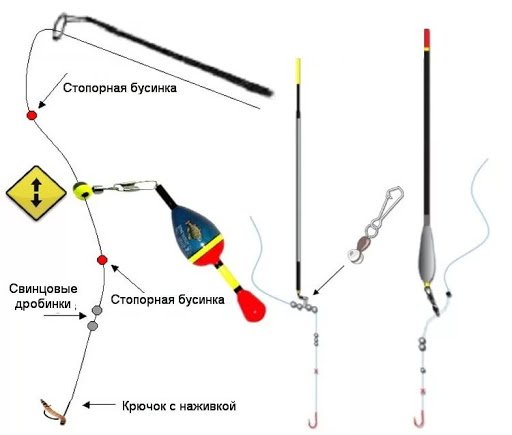
- The reel should be chosen according to your own taste. Either you can stick to the classic version in the form of an inertial one, or experiment and install a non-inertial one in order to catch large areas of the reservoir that are possible for casting.
- For fishing with float tackle, you can choose both fishing line and braid . The size range is the same as for fishing with a spinning tackle. For a fishing line it is 0.18-0.30 mm in diameter, and for a braid it is 0.14-0.2 mm in diameter.
- With equipment, everything is not as complicated as it might seem at first glance. As a standard, this is a small or medium-sized float, with a carrying capacity of 2 to 8 grams; a triple swivel is located just below, at the two ends of which the leashes cling. The lower one is made longer and on it, in addition to the hook, approximately in the middle there is a small sinker, often an olive or a standard ball shape, and then the hook. There is just a hook on the top leash, and the leash itself is shorter. It is important that these hooks are equipped with special lures such as feathers, which make them more attractive to the fish and look like some kind of small insect or fry.

Taste qualities of char, how is it useful and what commercial value does it have?
Taste qualities of char are truly widely appreciated among many people who have met this fish at least once. Due to their impressive size, the northern Arctic char, Kamchatka and river char are of great commercial importance and are mined in large volumes. In addition, juveniles grow very quickly and allow them to replenish the population of the species, spawning after a while. Let’s take a closer look at what the charm of char meat is and why it is so valued among many people.
- meat helps to avoid ophthalmic problems;
- it helps to improve the work of the heart muscle;
- enhances immunity;
- reduces the chance of hormonal disruptions;
- the char meat contains saturated fatty acids;
- meat contains a huge amount of B vitamins, as well as K, E, A and PP.
- contains copper, iron and manganese;
- char meat contains magnesium, phosphorus, sodium and calcium.

The price of char in the Russian Federation per 1 kg as of 2021
Loach meat is a storehouse of useful substances, but at the same time it is incredibly tasty food. Red fish is widespread in the trade and it is not surprising that the price for it is quite high. In the case of char, the price for 1 kg of fish is about 500-800 rubles, depending on the region in which the fish is sold, and on the season of sale, as well as the amount of fish caught, that is, the catch. But at the same time, within Moscow and St. Petersburg, you can find higher prices for this fish, reaching 1000 rubles per kilogram or more.
How to cook char – some simple and delicious recipes
Loach baked in foil
- You need to take several small carcasses of char from 400 to 800 grams and cut them, getting rid of the fins, head and cutting them into layers along the ridge.
- After that, you need to mix the salt and ground pepper and gently coat the fish with them in acceptable quantities.
- Then you need to make a creamy zest dressing. A good piece of butter is taken and about a couple of teaspoons of zest is rubbed there, and then everything is mixed.
- After that, the foil is taken, the fish is placed on it, and after that it is carefully rubbed with oil and zest on all sides and sent to the oven, covered with foil, for 20 minutes at a temperature of 180 degrees. After 20 minutes has elapsed, the fish must be taken out and the top layer of foil removed, and then sent to the oven for another 10 minutes to obtain a golden brown crust.
How to cook char in the oven – a delicious recipe step by step: https://youtu.be/YJc6zG-eKK8
Char ear
Recipe for cooking char fish soup:
- It is necessary to pre-cut several carcasses of char into medium or small pieces and put in a saucepan, pouring several liters of cold water and pre-salt, pepper and throw the bay leaf. After that, you need to put it all on fire and bring to a boil.
- After everything has boiled, it is necessary to strain the broth from the seeds and spices. Next, you need to get the fish, cut it, get rid of the bones and cut the fish fillet into small pieces.
- Next, you need to put the peeled fish broth on the fire and add the pre-diced potatoes, onions and a little carrots there, bringing it all to a boil.
- After the vegetables have cooked, you can again throw the pitted fish there and bring to a boil. Then the greens are added and the salt is tested to taste.
